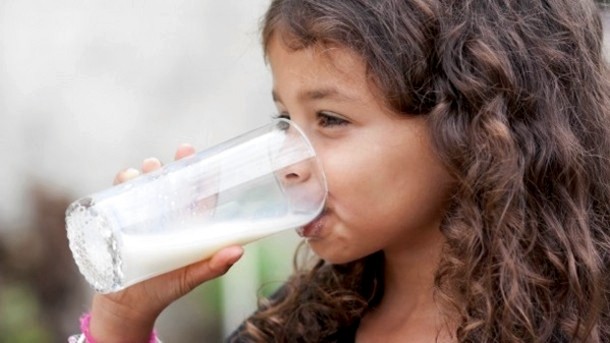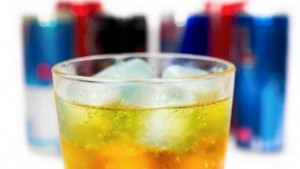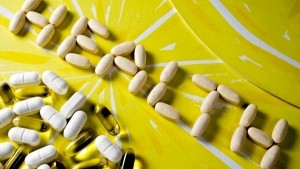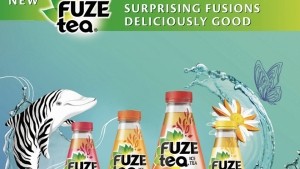This week Down Under
Study: No benefits for children from reduced-fat dairy diet

Health bodies across the world recommend reduced-fat dairy products for adults and children aged over the age of two, but Edith Cowan University research, recently published in the journal Nutrients, found that full-fat dairy may be just as beneficial for cardiovascular health.
For the study, Therese O’Sullivan examined the eating habits of 860 teenagers in Western Australia from early to late adolescence.
She found that the cholesterol profiles of teenagers who ate more low-fat dairy were no better off than those who consumed full-fat equivalents.
“We have long been recommending people eat low-fat dairy on the assumption that, because it has less calories and less saturated fat, it is healthier for you,” said Dr O’Sullivan, though her results foundvery little good evidence to support this.
“In fact, we were able to show that for teenage boys, full-fat dairy consumption was associated with a slightly better cholesterol profile than low-fat dairy.
“Intakes of both low-fat and regular fat dairy products were associated with better blood pressure in boys.”
The researchers also examined the waist-to-height ratio of the teenagers to evaluate obesity, finding no link between the type of dairy eaten and over-weight.
“Given that it has less calories per serve, it was assumed that low-fat dairy would help children and teenagers maintain a healthy weight, but we found that neither low fat nor regular fat products increased risk of obesity” Dr O’Sullivan said.
“This could be because children and teenagers are actually quite good at regulating their food intake, so eating full-fat dairy makes them feel more full, potentially reducing their consumption of other foods, but this is something that requires further research.”
Dr O’Sullivan is now planning to run a dietary trial looking at the health implications of low-fat versus full-fat dairy in children later this year.
More stories from Down Under…
Scientists may have linked energy drinks with heart palpitations
South Australian researchers believe that more than two energy drinks per day could be the cause of fast heartbeat and palpitations.
In a paper published in the International Journal of Cardiology, Adelaide University researchers learnt that more than one-third of patients under the age of 40 attending hospital emergency departments with heart palpitations had recently consumed an energy drink.
Scott Willoughby, who co-authored the paper, said that 70% had taken some sort of energy drink in their lifetime. Eight had consumed more than five energy drinks in the previous 24 hours, and one had even consumed 12 cans with alcohol.
“Those patients who were heavy consumers of energy drinks were found to have a significantly higher frequency of heart palpitations than those who consumed less than one per day,” said Dr Willoughby.
“And, importantly, fast heartbeat and heart palpitations were seen in energy drink consumers who were healthy and had no risk factors for heart disease.”
Colleague Ian Musgrave said there had been increasing concern over energy drinks among health practitioners and researchers.
“The major stimulant in these drinks is caffeine, which is generally safe when consumed at the recommended levels. However, some people appear to be more sensitive to the effects of caffeine, and the combination of ingredients in these energy drinks may pose a further threat to those who consume large quantities,” said Dr Musgrave.
“When vitamins and herbal extracts are combined together, they can create a toxic combination. Furthermore, the drinks are even more harmful when consumed with alcohol.”
Researchers says it is not yet clear exactly which ingredients lead to adverse heart reactions and more research into this is urgently needed.
Natural healthcare stakes case for Australian government policy
Australia’s booming complementary medicines segment “epitomises the goals” of the government’s science agenda and its drive to support smart ideas, the industry’s representative body believes.
In two years natural healthcare has grown from a A$2.3bn (US$1.6bn) industry to one currently worth A$4.2bn, according to industry figures. Over the same period, it has seen its international shipments grow by 36%.
“Australian complementary medicine exports are booming,” said Carl Gibson, chief executive of Complementary Medicines Australia in the association’s pre-Budget submission.
“We have seen a growing demand for Australian products, driven by the industry’s reputation for products that meet the highest standards of quality and safety. Exports to the Asian region have more than doubled and South Korea has overtaken New Zealand as our top export market.”
With the industry on an upward trajectory, Australian companies have reflected this growth by hiring “significantly” and developing a range of technical and vocational skills through research and the use of complex technologies, said Gibson.
CMA claims that the complementary health industry directly employs 6,000 Australians in high-value jobs, while 59 manufacturing sites are licensed by TGA, the industry regulator.
“It is an industry that holds great potential to grow exponentially and to contribute further to the strength of high-skill local manufacturing and exports.”
In its pre-Budget submission, CMA outlines measures that it believes would provide savings worth A$1.8bn (US$1.3bn) to the Treasury at a cost of “minimal additional expenditure”.
These call for fine-tuning of the TGA’s approvals system, enhanced support for exporters, incentives to intensify research and the assembly of a “health taskforce” to assess preventative healthcare.
“CMA believes there is a requirement for further cooperation and collaboration between policy makers, researchers, industry and health professionals to ensure complementary medicines are a future component of policy contributing to the overall health of all Australians,” the submission concluded.
Fsanz calls for public submissions on herbicide-tolerant modified corn
The antipodean regulator has called for evidence in support of an application to permit food made from a corn line that has been genetically modified to be tolerant to two herbicides.
Peter May, acting chief executive of Fsanz, said the Australia and New Zealand regulator’s testing had found the corn to be safe for human consumption.
“Fsanz has conducted a thorough safety assessment on the application and no potential health and safety concerns were identified,” May said.
”Based on data provided and other available information, food derived from this corn is considered to be as safe for human consumption as food derived from conventional corn.”
The regulator is calling on government agencies, public health professionals, the food industry and members of the community to submit their views on the subject by March 22.
All decisions Fsanz makes on standards are then notified to ministers responsible for food regulation. The ministers can decide to adopt, amend or reject standards, or they can ask for a review.
Coca-Cola launches Fuze Tea backed by ‘multi-million dollar’ campaign
Coca-Cola South Pacific has backed the launch of its Fuze Tea ice tea brand in Australia with a multi-million dollar marketing push.
Fuze first launched in America in 2001 and was acquired by Coca-Cola in 2007. It is sweetened with a mix of stevia and sugar and has about 70% of the kilojoules of Nestea, which Coca-Cola Amatil, the antipodean distributor, has since ceased to manufacture.
Fuze aims to deliver “an aspirational iced tea offering to consumers” and is being positioned as a premium alternative within the ice tea category.
The campaign will focus on “surprising fusions that are deliciously good”, as part of the brand's strategy to shake up the category for new and existing iced tea drinkers.
Fuze Tea includes five different tea types and flavours: Wild Raspberry & Hibiscus, Summer Mango & Chamomile, Juicy Peach, Crisp Apple & Lemongrass and Zesty Lemon, made from a variety of teas including black, green and rooibos.
Three of the five variants are low kilojoule and are sweetened with stevia.
The brand will primarily target adult social occasions with a focus on capturing the attention of women in the 18-49 age bracket, and its launch is backed by a multi-channel marketing strategy.
In the coming months, Fuze Tea will run a series of high-impact marketing initiatives including a partnership with Channel 7's My Kitchen Rules, whereby the beverage will feature as a “welcome drink” for contestants.
Emma Harper, brand manager, said Coca-Cola South Pacific had identified a “big opportunity to breathe some new life” into the ice tea category.
"Watch this space as we continue to evolve Fuze Tea in the coming months,” she said.








